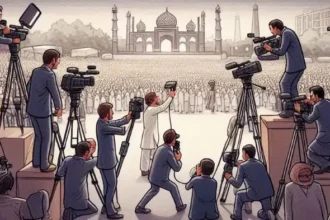Replacing the perspective lens shifts the situation to a 180-degree angle. The rule governs almost every walk of life. So is the case of a writer. One thing is for sure: “Good writers are great readers.” Without reading, writing is at the length of infinity. Every writer is a reader, though the inverse relationship does not often hold. So, if you are a writer, learn to read like a writer.
Be a “word hunter”
While reading a piece of writing, look out for fanciful vocabulary. Don’t skip this step. For a writer, pen and paper are assets. Make sure you carry them while reading. Jot down the new words and save the list for later use. Never make the mistake of skimming if you are a writer! Life plays its music as long as we continue to learn; there is no “done,” only consistency. The English language extends to 11 million words today, with no superhuman existing on Earth to claim complete knowledge of this gigantic list. Thus, as a writer, enriching your vocabulary signals a more fantastic writing process. Why? Purely because not every word fits precisely everywhere. With this restriction, if you substitute a synonym carelessly, you risk fading out the colour of context and bruising the description.
Scrutinise the sentences.
They are worth it. Each day, we create and pile up tons of sentences. Do they all clamp up to the same rank of uniqueness? Do all of them hold the same ambience? Or is it like a tug-of-war between excitement and dullness? Did you ever wonder about this? If not, then it is the right time. Sentences have the authority either to grab the reader’s attention or to let it wander and eventually die away. They serve as the gateway to the reader. Keep an eye on the structure of sentences. Are they too complex or just simple? Are they lengthy or three words short? Take observation to a new height: do the sentences in a paragraph follow the same pattern of length and complexity?
Paragraphs as pathways
Paragraphing the content is ordering your key points so the reader can transit smoothly to your next idea without losing the former one. Paragraphs of approximately the same length drain away the energy and exuberance that might have been sweeping through the audience earlier. While reading, consider the way the writer unfolds the story. Is the central purpose staged in the opening paragraph, or have the first two paragraphs been devoted to collecting the reader’s interest? However, not all categories of writing abide by this rule. For example, reports often follow paragraphs of similar length, while fiction thrives on fluctuations in word count to add colour and make the story vivid. Working with this rule will embellish your piece.
Storytelling as structure
Writing is the art of storytelling. To be a great storyteller, one has to equip oneself with some skills. A prominent feature that glimmers in fairy tales is the start with: “Once upon a time, there was a king who ruled …” The leading idea is not revealed immediately. First, things are discussed in general, then narrowed to specifics. Not surprisingly, the reverse is also required at times. Some pieces start with a specific idea and then relate it to a general opinion. Be keen on noticing which of the two techniques the writer employs to construct his point of view. Know their tactic. Experiment with this rule across genres. You will then discover that some writers follow it blindly while others bend it to their needs. Ultimately, your style will rise from it.
Steal like an artist.
This rule originated from Austin Kleon’s book. To extract the most from your creativity, Kleon unveils a peculiar yet superb key point: steal from your surroundings. Steal the work, ideas, words, and more. Put simply: pick up the content. Make modifications to carve it into something unique, as if you were the first to put the idea forward. Miracles can happen even from the smallest part. From a writer’s perspective, even a single sentence can ignite a cascade of ideas in your curious mind. Do not hesitate. Add it to your basket. Subtract some parts or add your content to them. Carve it out into a new shape, and there you are with fresh work. However, presenting the piece in the same form you found it earns nothing but the label of plagiarism. Paraphrasing, too, offers only friction. It is not about copying others’ work but blending it with your thoughts until it becomes truly yours. The rules do not hand you a guarantee card for great writing, nor do they draw its final boundary. Yet, if you practise them, play with them, and fold them into your habit, your writing will sharpen, your voice will deepen, and one day you will hear in your own words the quiet music of surprise.









As a dedicated reader and scientific writer, I found this article both insightful and well-crafted. It’s a thoughtful reminder that attentive reading is the foundation of meaningful writing. Appreciated this piece.